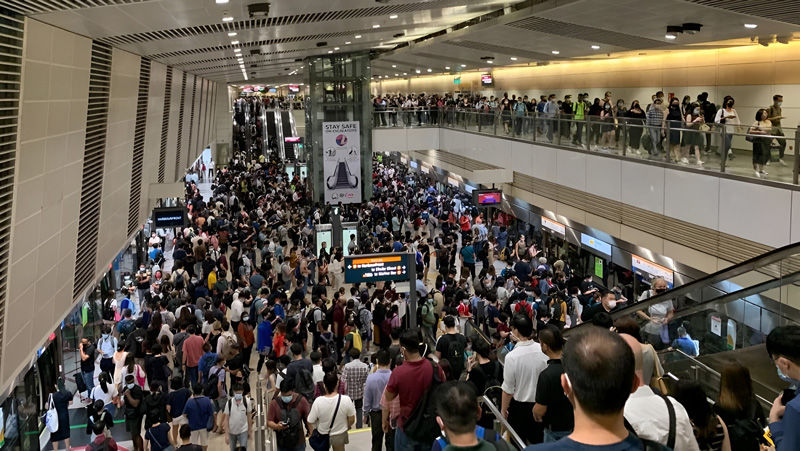Singapore MRT Breakdown Survival Guide
- circular connection
- Sep 18
- 3 min read
When the MRT breaks down, most commuters are left without timely updates or clear alternatives. This guide offers a proactive approach to staying calm and in control.

Image: Facebook/Adam Worlork
Singapore’s transportation system has long been lauded for its efficiency. However, a recent surge in service breakdowns has once again shaken commuter confidence. With 16 "isolated" breakdowns reportedly logged in just 2.5 months, and rail reliability at its lowest since 2020, many are beginning to accept that disruptions are no longer rare, but expected.
Communication during these incidents has been less than ideal. Delays in announcements, vague instructions, and patchy updates from operators have left many commuters stranded and frustrated. The experience of being stuck on a train platform without answers, or wandering in search of bridging shuttle buses that may never arrive is becoming an unfortunate reality.
Since the question is no longer if the MRT will fail again, but when, it is time to rethink our daily commute strategies.

AI Image: OpenAI
Here is a survival guide on how commuters can prepare for and respond to MRT breakdowns more effectively:
Before You Leave Home
Build in Buffer Time for Critical Days
Although MRT disruptions cannot be predicted, commuters can leave home slightly earlier on days with time-sensitive events. A buffer of 10 to 15 minutes provides flexibility and reduces the risk of missing key appointments.
Have Alternative Routes in Mind
Knowing multiple routes to your destination is essential. This includes familiarity with bus lines, parallel MRT routes, or walking paths between stations. Identify key interchange stations where alternate travel options are available. Keep an offline MRT map or route planner app on your phone to reference in case mobile data is disrupted.
Use Real-Time Apps for Information
Before heading out, check official MRT operator updates as well as social media platforms and forums such as Reddit. These often provide real-time alerts from fellow commuters and help identify potential problems before you begin your journey.
Prepare a Small Delay Kit
A basic commuter kit can make an extended delay more manageable. Include a power bank, a bottle of water, tissues, and a small snack. For longer commutes, offline reading materials or entertainment can help pass the time.
When the Breakdown Happens
Alert the Necessary Parties Early
If train service stalls unexpectedly, notify your employer, school, or reporting officer immediately. A short message explaining the situation signals accountability and allows others to adjust expectations.
Request Flexibility If Possible
If your job allows for flexible hours or remote work, request permission to delay your journey slightly or work from another location. This prevents the need to rush with the crowd and allows you to travel more safely and comfortably once services resume or alternative routes are clearer.
Do Not Rely Solely on Bridging Buses
Free bridging buses are often uncoordinated and difficult to locate. Most stations lack clearly designated queuing areas, and signage is minimal. If you choose to use them, ask staff for directions or observe where others are heading. Consider using standard public buses or ride-hailing apps if available.
Avoid the Immediate Rush
Most commuters instinctively join the rush to leave the station, which can create overcrowding and confusion. If there is no urgent need to be somewhere, observe the situation calmly, evaluate your options, and proceed once it is safer to do so.
Stay Calm and Observe Safety
Remain calm and follow instructions from station staff. Avoid crowding around platform doors or exits, and keep a safe distance from the tracks. Maintaining composure helps ensure both personal and public safety.
MRT disruptions are deeply inconvenient, especially in a city where transport efficiency is part of daily life. While better system reliability and communication are urgently needed at a systemic levels, commuters can take a proactive approach by preparing ahead and responding with clarity when disruptions occur.









